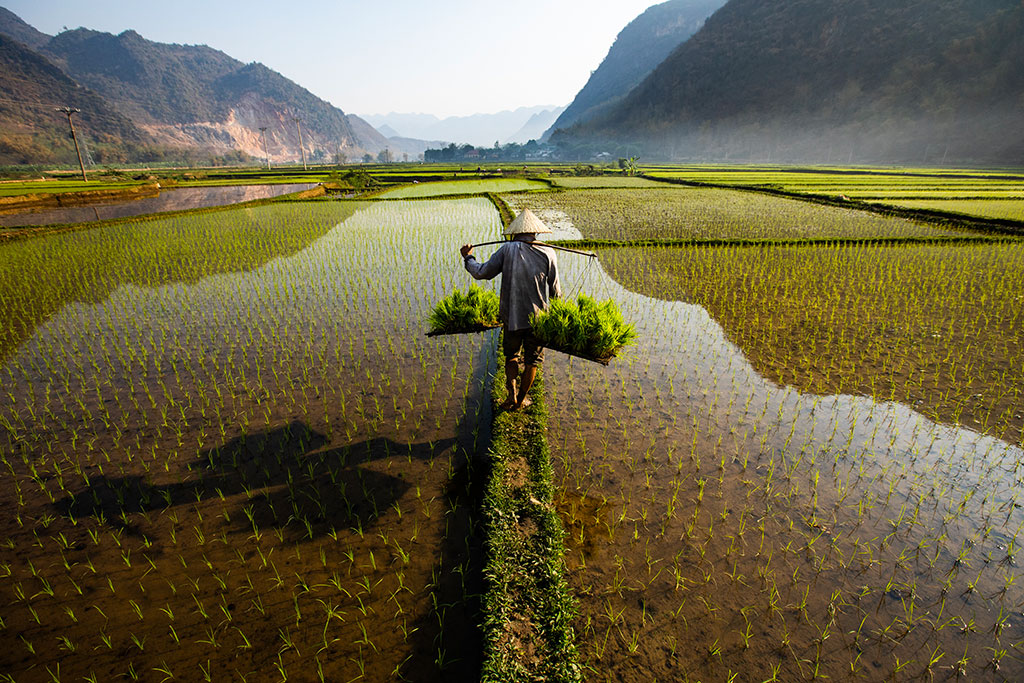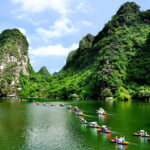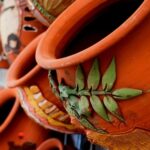Hello, fellow travelers! 🌏 Welcome back to Vietnam Around, where we delve into the rich tapestry of Vietnam’s culture and daily life. Today, let’s embark on a journey to understand how Vietnamese people make a living across different regions of the country. From the bustling urban centers to the serene countryside, each area offers a unique glimpse into the livelihoods that sustain its communities.
1. The Mekong Delta: The Rice Bowl of Vietnam
The Mekong Delta, often referred to as the “Rice Bowl of Vietnam,” is a fertile region in the southern part of the country. This area is renowned for its extensive rice paddies, fruit orchards, and intricate waterways.
Primary Livelihoods:
- Rice Cultivation: Farmers in the Mekong Delta produce a significant portion of Vietnam’s rice, contributing to the country’s status as one of the world’s leading rice exporters.
- Fruit Farming: The region’s tropical climate supports the cultivation of fruits like mangoes, durians, and rambutans, which are sold both domestically and internationally.
- Aquaculture: Fish and shrimp farming are prevalent, with the delta’s waterways providing ideal conditions for aquaculture.
Challenges:
Despite its abundance, the Mekong Delta faces challenges such as climate change, saltwater intrusion, and land erosion, which threaten traditional livelihoods.
2. The Central Highlands: Coffee Capital and Beyond
The Central Highlands of Vietnam are characterized by rolling hills, rich volcanic soil, and a cooler climate, making it ideal for certain types of agriculture.
Primary Livelihoods:
- Coffee Production: Vietnam is the world’s second-largest coffee producer, and the Central Highlands are at the heart of this industry, particularly known for robusta coffee beans.
- Rubber and Pepper Plantations: The region also supports rubber and black pepper cultivation, contributing significantly to local incomes.
- Tea Cultivation: Certain areas, like Lam Dong province, are known for tea plantations, producing both green and black teas.
Challenges:
Farmers in the Central Highlands often face issues related to market fluctuations and the need for sustainable farming practices to prevent soil degradation.
3. The Red River Delta: A Blend of Tradition and Modernity
Located in the north, the Red River Delta is a densely populated and agriculturally rich region, encompassing the capital city, Hanoi.
Primary Livelihoods:
- Rice Farming: Similar to the Mekong Delta, rice cultivation is a staple here, with the delta’s fertile plains supporting intensive agriculture.
- Handicrafts and Artisanship: Villages specialize in traditional crafts such as pottery, silk weaving, and wood carving, preserving cultural heritage while providing income.
- Industrial and Service Sectors: Proximity to Hanoi has led to increased employment opportunities in manufacturing, services, and commerce.
Challenges:
Rapid urbanization and industrialization pose challenges, including environmental pollution and the displacement of traditional farming communities.
4. The Central Coast: Navigating the Waves of Livelihood
Stretching along the eastern seaboard, Vietnam’s Central Coast is a region where the mountains meet the sea, creating a diverse environment for its inhabitants.
Primary Livelihoods:
- Fishing and Seafood Processing: Coastal communities depend heavily on the sea, engaging in fishing and processing seafood for domestic consumption and export.
- Tourism: Cities like Da Nang and Hoi An have become tourist hotspots, providing jobs in hospitality, retail, and related services.
- Agriculture: Inland areas focus on cultivating crops like rice, peanuts, and sugarcane, adapting to the region’s specific climatic conditions.
Challenges:
The Central Coast is prone to natural disasters such as typhoons and floods, which can disrupt livelihoods and necessitate resilient community planning.
5. The Northern Highlands: Cultivating Resilience Amidst the Mountains
The Northern Highlands are home to various ethnic minority groups, each with distinct cultural practices and traditional livelihoods.
Primary Livelihoods:
- Subsistence Agriculture: Farmers practice terrace farming, growing rice, maize, and other crops suited to mountainous terrains.
- Livestock Rearing: Raising animals such as pigs, chickens, and buffaloes supplements household incomes and provides food security.
- Handicrafts: Traditional crafts, including weaving and embroidery, are both cultural expressions and sources of income, especially through community-based tourism.
Challenges:
Remote locations and limited access to markets and services can hinder economic development, while environmental factors like landslides pose additional risks.
Embracing the Diversity of Vietnamese Livelihoods
Vietnam’s regional diversity is mirrored in the various ways its people sustain themselves, each adapting to their environment’s unique opportunities and challenges. Understanding these livelihoods offers deeper insight into the resilience and ingenuity of the Vietnamese people.
Stay tuned to Vietnam Around for more explorations into the heart of Vietnam’s culture and daily life. If you have specific regions or topics you’d like us to cover, feel free to share your suggestions!
With appreciation for the journey,
Vietnam Around 🌏



